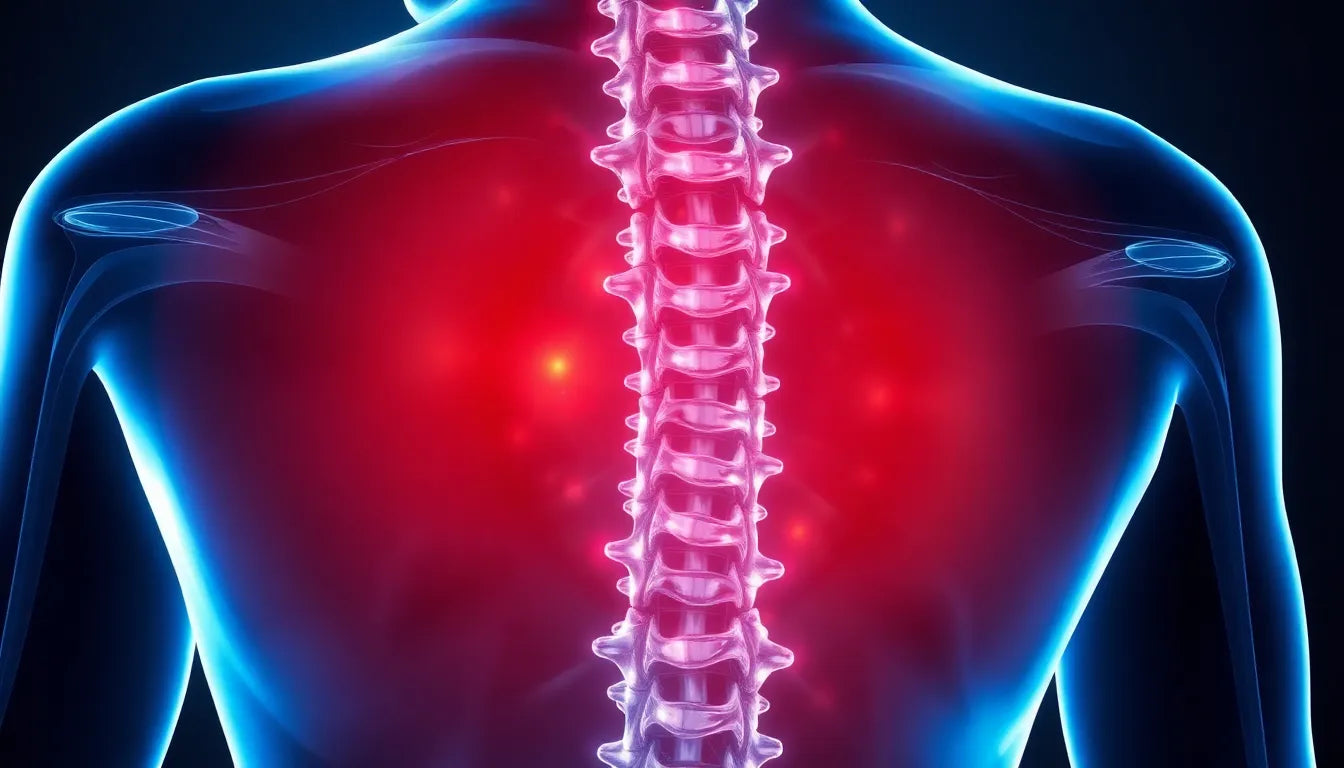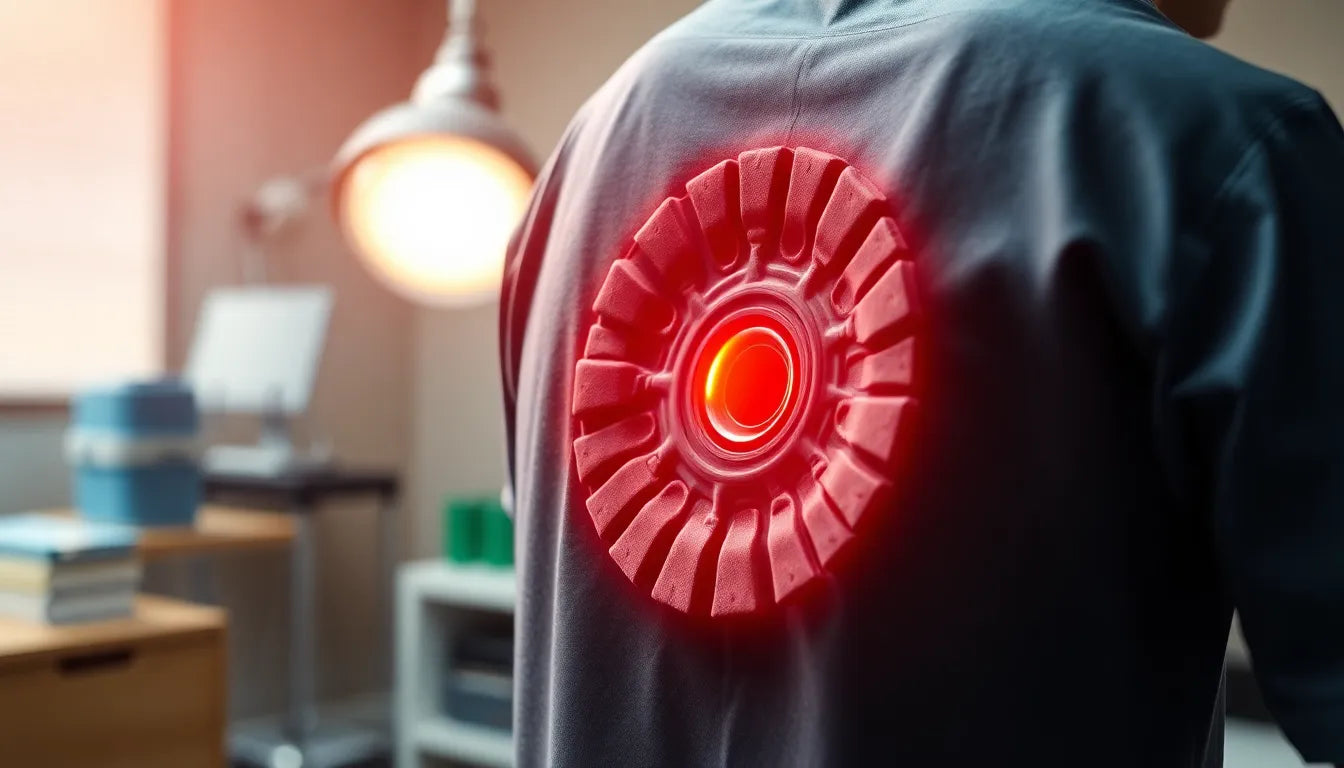Spondylosis, a degenerative condition affecting the spine, is a common concern for many individuals, particularly as they age. This condition, often referred to as spinal osteoarthritis, involves the wear and tear of the spinal discs and joints. As these structures deteriorate, it can lead to a range of uncomfortable symptoms such as persistent pain, stiffness, and reduced mobility, which can significantly impact daily life. Understanding the nature of spondylosis and its symptoms is crucial for those seeking to maintain an active and pain-free lifestyle.
Understanding spondylosis
Spondylosis manifests in various forms, depending on which part of the spine is affected. Whether it's cervical (neck), thoracic (upper back), or lumbar (lower back), the symptoms can vary but often include chronic pain and stiffness that may limit movement. These symptoms arise as the spinal discs lose moisture and shrink, and as bone spurs may develop, further complicating the condition. For many, the journey to relief begins with recognizing the signs and understanding the importance of seeking effective treatment options tailored to their specific needs.
The journey to relief
The path to managing spondylosis is as varied as the individuals who experience it. Treatment options range from conservative approaches, such as physical therapy and medication, to more invasive procedures like surgery. This spectrum of treatments aims to provide lasting comfort and effective symptom management. The key to successful treatment lies in individualized plans that consider the severity of the condition and the unique needs of each patient. By focusing on personalized care, individuals can find relief that not only addresses their symptoms but also enhances their overall quality of life.
As we explore the spectrum of spondylosis treatments, it is essential to recognize that the goal is not merely to alleviate symptoms temporarily but to achieve a sustainable level of comfort and functionality. By understanding the various options available, from exercise therapy to surgical interventions, patients can make informed decisions about their care. This comprehensive approach ensures that each individual can navigate their journey with confidence, armed with the knowledge and resources necessary to manage their condition effectively.
Conservative treatment approaches for spondylosis
When it comes to managing spondylosis, conservative treatment options often serve as the first line of defense. These approaches aim to alleviate symptoms and improve quality of life without resorting to surgical interventions. Among the most effective conservative treatments are exercise therapy, physical therapy, and medication, each offering unique benefits tailored to the needs of spondylosis patients.
Exercise therapy: strengthening and flexibility
Exercise therapy plays a pivotal role in managing lumbar spondylosis and chronic spine pain. Regular physical activity helps strengthen the muscles supporting the spine, enhancing stability and reducing strain on the affected areas. Specific exercises, such as low-impact aerobic activities, core strengthening routines, and stretching exercises, can improve flexibility and range of motion. These exercises not only alleviate pain but also help prevent further deterioration of the spine by maintaining its functional capacity.
Physical therapy: enhancing mobility and reducing pain
Physical therapy is another cornerstone of conservative treatment for spondylosis. It involves a series of targeted interventions designed to enhance mobility and decrease discomfort. Physical therapists often employ techniques such as manual therapy, which includes joint mobilization and soft tissue manipulation, to relieve tension and improve circulation in the affected regions. Additionally, therapeutic exercises tailored to the patient's specific condition can significantly enhance functional mobility and reduce stiffness.
Medication and manual therapy: symptom relief
For individuals experiencing significant pain and discomfort, medication can provide necessary relief. Anti-inflammatory medications, such as nonsteroidal anti-inflammatory drugs (NSAIDs), are commonly prescribed to reduce inflammation and pain. Muscle relaxants may also be used to alleviate muscle spasms associated with spondylosis. Moreover, manual therapy techniques, including chiropractic care, can offer additional benefits by improving spinal alignment and reducing nerve irritation, which can further alleviate symptoms.
Interventional treatments: epidural steroid injections
When conservative measures are insufficient, interventional treatments like epidural steroid injections (ESI) may be considered. ESI is a widely used procedure for managing chronic axial and radicular pain resulting from lumbar spine degeneration. This intervention involves injecting a corticosteroid into the epidural space around the spinal cord, aiming to reduce inflammation and provide pain relief.
The popularity of ESI has grown significantly, with procedures increasing by 121% between 1998 and 2005. However, success rates can vary, influenced by factors such as the specific techniques used and the individual patient's condition. While ESI can offer substantial relief for some, it is not a permanent solution and may need to be repeated periodically for sustained benefits.
Surgical options for spondylosis
In cases where conservative and interventional treatments fail to provide adequate relief, surgical options may be explored. Surgery is generally considered when there is a clear structural cause of symptoms that can be surgically addressed. Patients who are candidates for surgery typically have a structural problem that, if corrected, is expected to relieve symptoms and improve function.
Criteria for surgical intervention
The decision to proceed with surgery involves careful consideration of several criteria. These include the presence of an identifiable structural issue contributing to symptoms, such as spinal stenosis or herniated discs, and the likelihood that surgical intervention will provide meaningful relief. Patients should also have realistic expectations about the outcomes of surgery, understanding both the potential benefits and risks involved.
Types of surgical procedures
Common surgical options for treating spondylosis include spinal fusion and decompression surgery. Spinal fusion involves joining two or more vertebrae to eliminate movement and reduce pain, while decompression surgery aims to relieve pressure on the spinal cord or nerves by removing bone or tissue. Each procedure has its indications and potential outcomes, and the choice of surgery depends on the specific needs and condition of the patient.
By understanding the spectrum of treatment options available, individuals with spondylosis can make informed decisions about their care. Whether opting for conservative measures, interventional treatments, or surgical interventions, the goal remains the same: to achieve lasting comfort and improved quality of life.
Emerging treatments for spondylosis
As medical research progresses, emerging treatments for spondylosis offer hope for enhanced symptom management and improved quality of life. These innovative therapies, though still under investigation, show promise in addressing the underlying causes of spondylosis and providing more sustainable relief.
Innovative therapies
Among the cutting-edge treatments being explored are artificial cervical discs, gene therapy, and stem cell therapy. Artificial cervical discs are designed to replace damaged discs while preserving the spine's natural range of motion, potentially reducing the need for spinal fusion. Gene therapy aims to repair or replace defective genes that contribute to spinal degeneration, offering a more targeted approach to treatment. Stem cell therapy involves using the body's own regenerative capabilities to repair damaged tissues, potentially reversing some of the degenerative changes associated with spondylosis.
While these therapies are still in the experimental stages, ongoing research and clinical trials continue to explore their efficacy and safety. As these treatments advance, they may become viable options for individuals seeking alternatives to traditional interventions.
Ergonomic aids and tools
In addition to medical treatments, ergonomic aids and tools play a crucial role in managing spondylosis symptoms. Proper ergonomics can help prevent the progression of the condition and alleviate discomfort. Ergonomic chairs, adjustable desks, and supportive pillows are examples of tools that can improve posture and reduce strain on the spine. By incorporating these aids into daily routines, individuals can enhance their comfort and minimize the impact of spondylosis on their lives.
Patient-centered education and self-management strategies
Empowering patients with knowledge and self-management strategies is key to living well with spondylosis. Practical advice for daily living focuses on symptom relief and maintaining an active lifestyle. Regular exercise, stress management techniques, and proper nutrition are essential components of a comprehensive self-care plan.
Patients are encouraged to engage in low-impact physical activities, such as swimming or walking, to maintain flexibility and strength. Stress reduction practices, like yoga and meditation, can also help manage pain and improve overall well-being. By adopting these strategies, individuals can take an active role in managing their condition and enhancing their quality of life.
Frequently Asked Questions
What is the most effective treatment for spondylosis?
The effectiveness of spondylosis treatment varies based on individual conditions and severity. A combination of conservative treatments, such as exercise and physical therapy, often serves as the first line of defense. Interventional treatments and surgery may be considered for more severe cases.
Can spondylosis be cured?
While spondylosis cannot be cured, its symptoms can be effectively managed. A comprehensive treatment plan that includes lifestyle modifications, medication, and therapy can help control pain and improve functionality.
When should I consider surgery for spondylosis?
Surgery is typically considered when conservative and interventional treatments fail to provide relief, and there is a clear structural cause of symptoms. Patients should consult with their healthcare provider to evaluate the potential benefits and risks of surgery.
Are there lifestyle changes that can help with spondylosis?
Lifestyle changes, such as maintaining a healthy weight, engaging in regular exercise, and practicing good posture, can support treatment efforts. These modifications can help reduce strain on the spine and alleviate symptoms.
How do ergonomic aids assist in managing spondylosis symptoms?
Ergonomic aids, such as supportive chairs and adjustable workstations, help reduce strain on the spine and improve posture. By incorporating these tools into daily routines, individuals can enhance comfort and prevent symptom progression.
Sources
- "Lumbar Spondylosis Treatment Approaches." NCBI/PMC.
- "Cervical Spondylosis." StatPearls.
- "Spondylosis: Diagnosis & Treatment." Mayo Clinic.
- Sharma, A. "Spondylosis Relief Treatments." AmitSharmaMD.
- "Global Trends in Cervical Spondylosis Research." Frontiers in Neurology.
- "SERP Analysis Methodology." Victorious.
- "Spondylosis Treatments." Physiopedia.


















